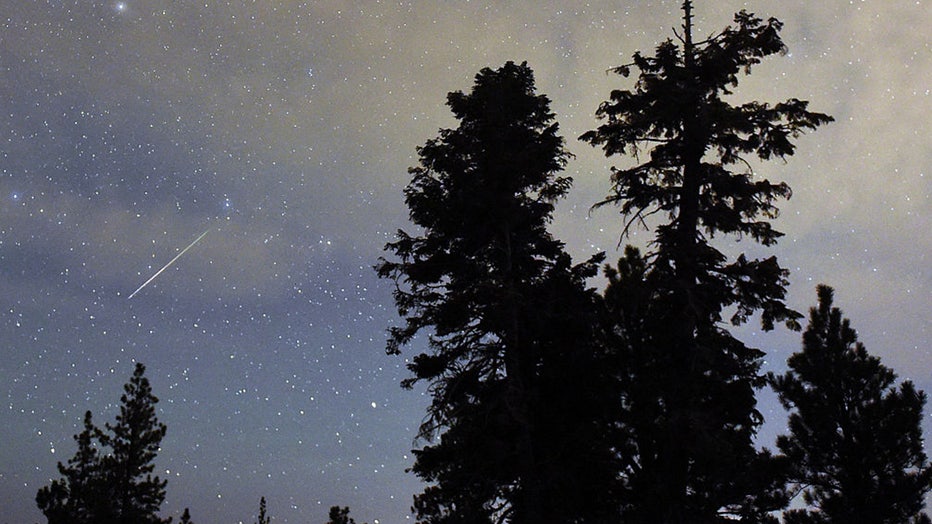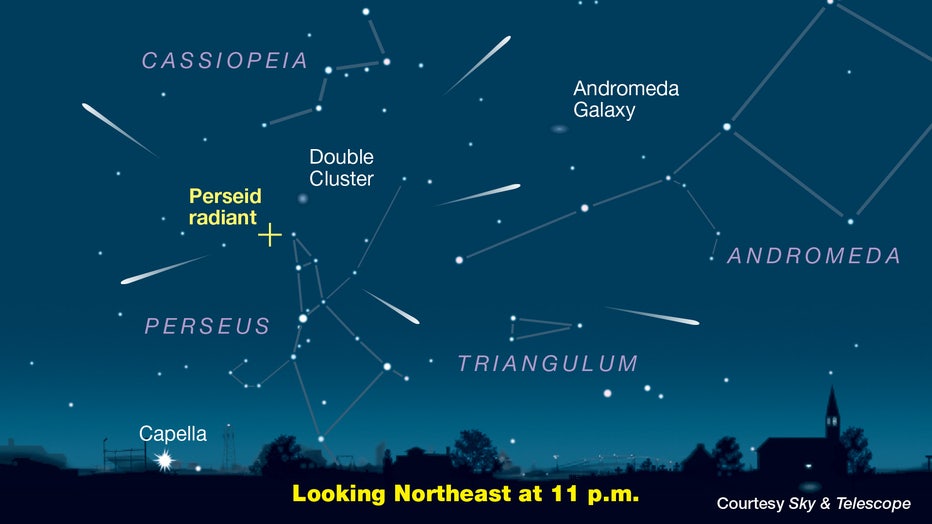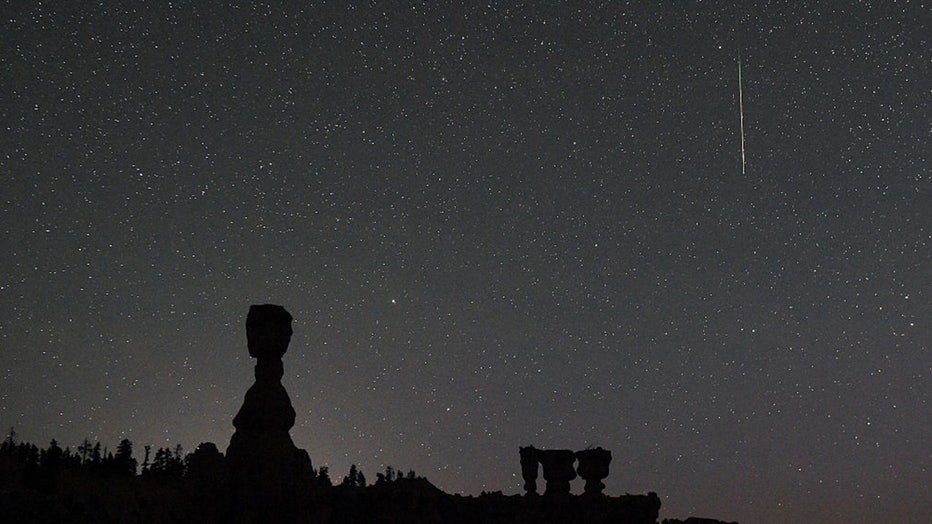Perseid meteor shower 2023: Where, when to watch this weekend

Meteor showers explained: what to know and how to watch
We call them shooting stars, but it's actually meteors that create dazzling streaks of light across our night sky. (FOX Weather)
Good news everyone!
It’s that time of year that the Perseid meteor shower is gracing the heavens once more.
While the Perseids have been showering our skies since July 14 this year, its peak is expected this weekend, particularly the morning of August 13.
Keep your eyes toward the skies this weekend and maybe you’ll catch a glimpse of this annual celestial event.

FILE - Two bright Perseid meteors the best two from 3 hours of shooting over the moonlit landscape of Dinosaur Provincial Park, Alberta, on August 12/13, 2017. (Alan Dyer/VW Pics/UIG via Getty Images)
When to watch
The Perseids have been passing through Earth’s atmosphere since mid-July but the moon will be in its waning crescent phase this upcoming weekend, which means it’s the optimal time to see the shower.
The best time to watch are on the mornings of August 11, 12 and 13, according to EarthSky.org.
Pre-dawn will be the peak times to watch for these meteors but since it should be a particularly dark night, some lucky sky gazers could catch a glimpse as early as 10 p.m. local times, according to NASA.

FILE - A Perseid meteor streaks across the sky above desert pine trees on August 13, 2015 in the Spring Mountains National Recreation Area, Nevada. (Ethan Miller/Getty Images)
Where to look
To catch the Perseids, look toward the northeastern horizon.
The meteors should be traveling from north to south, according to the American Meteor Society.
Their radiant point, which is where the meteors appear to "originate" or "radiate" from, is located in the constellation Perseus, hence the name Perseids.
Viewers don’t necessarily need to look solely at the radiant point in order to see the Perseids, but it’s a good point of reference to have.
And darkness is key.
"Wherever you observe, the best place to look is toward the darkest part of the sky. That might be straight up, or it might be partway up the sky in the direction with the least amount of light pollution," Rick Fienberg, senior contributing editor for Sky & Telescope, told FOX TV Stations.

FILE - The Perseid meteors appear to stream away from the shower's "radiant" point near the border of Perseus and Cassiopeia. (Sky & Telescope Illustration)
"The peak is broad enough that all things being equal, there’s no place in North America that’s better than anyplace else. But all things aren’t equal. Dark, rural sites are better than bright, urban ones. Sites with expansive views of the sky are better than sites hemmed in by trees and buildings. Sites with clear skies are better than sites with cloudy skies or inclement weather," Fienberg added.
How many meteors will I see?

FILE - A Perseid meteor streaks across the sky above the hoodoos named Thor's Hammer (L) and the Three Sisters (R) early on August 13, 2016 in Bryce Canyon National Park, Utah. (Ethan Miller/Getty Images)
For those who are in the perfect spot at the darkest of night with limited light from the moon of surrounding cities, some skywatchers can see as many as 90 meteors per hour, maybe more, according to EarthSky.
"People in the U.S. can reasonably expect to see around 40 Perseids in the hour just before dawn on the peak nights. That’s about one every couple of minutes, which is not bad," Bill Cooke, who leads NASA’s Meteoroid Environment Office, said in a NASA blog post. "However, we are assuming you are out in the country, well away from cities and suburbs."
About the Perseid meteor shower
The Perseids typically peak in mid-August every year because the Earth passes near the path of the comet from where the meteors originate.
The comet, 109/Swift-Tuttle, provides one of the most plentiful meteor showers that streak across Earth’s sky, according to NASA.
The shower is also known for its fireballs, which can last longer than an average meteor streak.
Swift-Tuttle orbits between the sun and beyond the orbit of Pluto once every 133 years, and the comet itself won't be visible to Earth again until 2125, NASA said.
This story was reported from Los Angeles.

